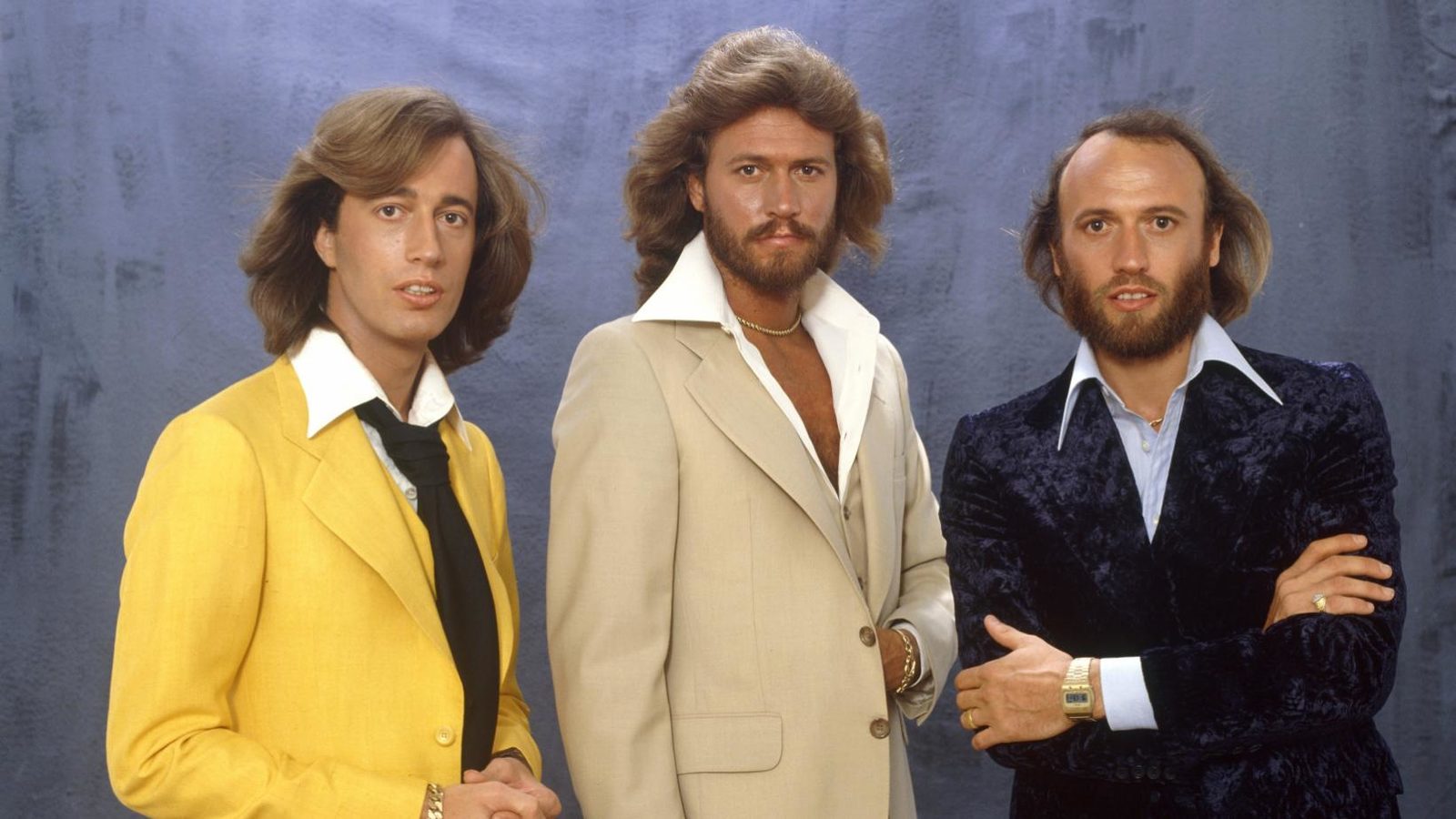
A Dance of Deception and Rhythm: The Bee Gees’ “Jive Talkin'”
In the vibrant tapestry of 1970s music, the Bee Gees stood as luminous architects of sound, crafting melodies that not only captured the essence of an era but also transcended it. With their 1975 hit, “Jive Talkin’,” the Bee Gees deftly wove together the strands of rhythm and storytelling, presenting a track that would not only redefine their career but also leave an indelible mark on the landscape of popular music.
Upon its release, “Jive Talkin'” soared to impressive heights, clinching the coveted position of number one on the Billboard Hot 100 chart. It was more than just a commercial success; it was a reinvention. This track heralded the Bee Gees’ foray into the world of disco, a genre that would come to define much of their work during the late 1970s. The song was a lead single from their album “Main Course,” which itself was a critical turning point for the band. Under the guidance of producer Arif Mardin, the Bee Gees embraced a fresh sound that was distinctly rhythmic and unmistakably infectious.
The story behind “Jive Talkin'” is as fascinating as its catchy beat. The song’s title and concept were inspired by the rhythmic clatter made by cars crossing a bridge in Miami—a city that had become a new home for the brothers Gibb. As they drove over the Julia Tuttle Causeway on their way to Criteria Studios, the repetitive thump-thump of tires on bridge joints sparked an idea. That mechanical rhythm found its way into the very backbone of “Jive Talkin’,” setting the stage for its unforgettable groove.
Lyrically, “Jive Talkin'” explores themes of deception and false promises. It’s a reflection on how words can be both alluring and misleading—a dance between sincerity and deceit. This duality is encapsulated in Barry Gibb’s soulful falsetto, Maurice’s steady bassline, and Robin’s harmonious backing vocals. Together, they create a narrative that resonates with anyone who has ever felt the sting of untruths wrapped in sweet talk.
For many listeners, particularly those who lived through its heyday, “Jive Talkin'” evokes memories of dance floors illuminated by spinning disco balls, where bodies moved in sync with its pulsating rhythm. It transports one back to a time when music was a communal experience—a shared joy that brought people together in celebration and sometimes in solace.
The significance of “Jive Talkin'” extends beyond its chart success or its role in ushering in the disco era for the Bee Gees. It marked a rebirth for the band at a time when their career seemed to be waning. The early ’70s had been challenging for them, with their earlier style falling out of favor. But with this track, they found their footing again, reinventing themselves with a sound that was modern yet timeless.
For those revisiting this classic today, perhaps with a sense of nostalgia, “Jive Talkin'” is more than just a song; it’s a journey back to moments etched in memory—a reminder of youth’s exuberance and life’s complexities. Its upbeat tempo belies deeper introspections about truth and pretense, making it as thought-provoking now as it was then.
As we listen to “Jive Talkin’,” we’re reminded not only of the Bee Gees’ remarkable ability to adapt and innovate but also of music’s power to capture fleeting moments and eternal truths alike. It’s an invitation to remember where we’ve been while dancing our way into where we’re going—always with a rhythm that speaks volumes beyond words.
In essence, “Jive Talkin'” is not just about moving your feet but stirring your soul—a timeless testament to the Bee Gees’ enduring legacy in music history.